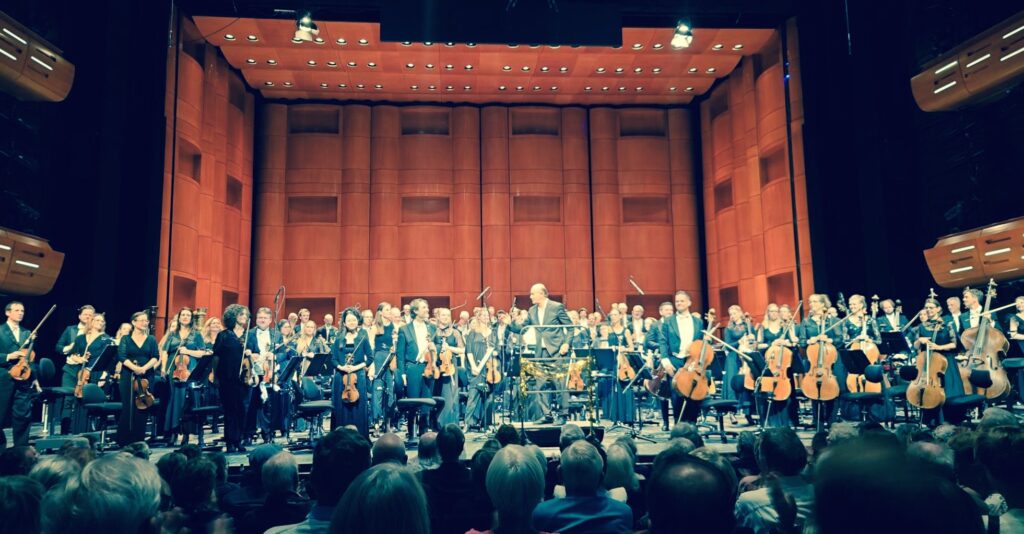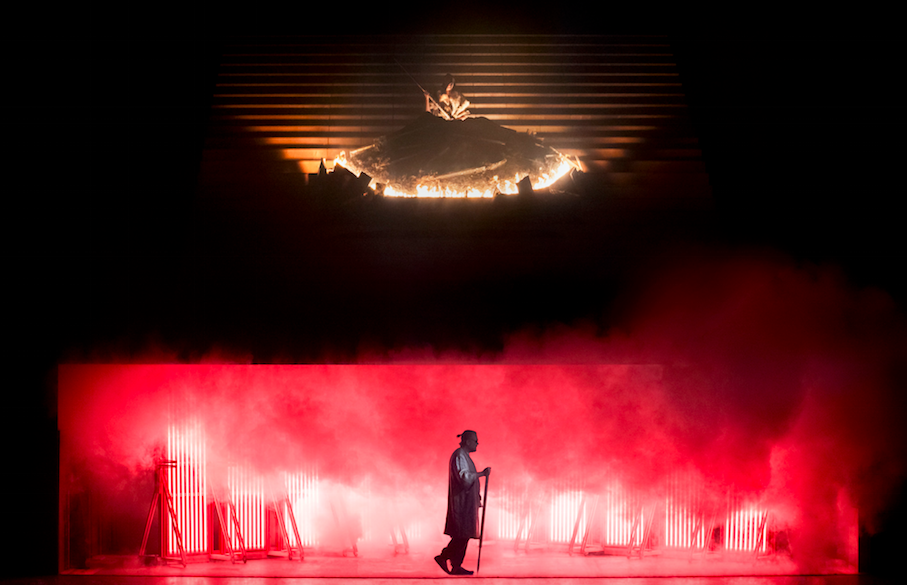Attempting to fathom the sonic depths of an orchestra established in 1448 is a huge challenge, a stimulating joy and certainly a work-in-progress
Not all orchestras sound the same. Last night in Copenhagen, the Royal Danish Orchestra celebrated 575 years – the oldest orchestral institution in the world by some distance. At this point I want to write “truly, it is the Vienna Philharmonic of the North”. Well, to some degree it is. But the wonder of the Royal Danish Orchestra is that, really, it sounds like no other orchestra on earth.
I’ve expended plenteous thought calories trying to describe the orchestra’s very particular sound since I first heard it play live in 2005, never really doing it justice. I suppose that’s the Sisyphean challenge (and privilege) of music criticism.
In this, its jubilee year, three different institutions asked me to write about the orchestra and its sound culture in detail. One was a record label, another a magazine, and the third the Royal Danish Theatre itself – a humbling assignment.
There and elsewhere, you can read about the orchestra’s history – its instruments collected down the years, the litany of significant former members (Dowland, Schütz, Nielsen) and guest conductors (Kleiber, Walter, Knappertsbusch, Monteux, Schoenberg, Stravinsky, Ormandy, Kubelik, Barbirolli, Solti, Bernstein, Barenboim, Boulez, Jansons…). There are a few pages in The Northern Silence on Sir Simon Rattle’s remarkable concert with the orchestra in 2013.
When last night’s concert is broadcast on the Danish Broadcasting Corporation’s P2 channel tonight, you can hear me talk briefly to presenter Rie Koch in the interval about some of the tangible elements that contribute to the orchestra’s distinctive sound – its feline brass, forward winds and soft-attacking strings (the latter two characteristics long associated with the Vienna Philharmonic).
We recorded the interview just before the concert began. As the music got going, I couldn’t resist but scribble down some more thoughts on what we were hearing. The opera house was pretty much full and there was that crackle of atmosphere you always hope will materialise at such events. A family in the row behind me had travelled en masse all the way from Mumbai to hear the orchestra.

But there wasn’t much sense of the Royal Danish Theatre expending a great deal to celebrate its crown jewel beyond a valedictory glitter canon. Nor did the programme scream ‘jubilee’: no new commission, no Danish music and a conductor making his debut.
Still…this was, I think, one of the more exceptional performances I have heard from this wondrous ensemble – one in which it seemed entirely happy in itself (it doesn’t always).
The programme allowed it to fly. Conductor Gábor Takács-Nagy is steeped in the central European sound culture that the Royal Danish Orchestra has always erred towards. He brought with him a calorific menu whose first two works referenced the orchestra’s history. Leopold Stokowski conducted his own arrangement of Bach’s Toccata and Fugue BWV565 with the orchestra in Copenhagen in 1939. Schoenberg, whose arrangement of Brahms’s Piano Quartet Op 25 was played next, conducted the orchestra later in the century.
Both pieces have their tongue in their cheek: Stokowski’s inflated Bach asks an orchestra to do ridiculous things in disguising a devotional organ piece as an entertainment; Brahms’s quartet was bonkers even before Schoenberg got to it, adding a symphony orchestra with a squadron of steampunk percussion.
Takács-Nagy, who clearly had the orchestra in his thrall, wanted expressionistic playing and got it – right from the wall-of-sound string tone at the opening of the Bach/Stokowski.
Why the piece worked here, was surely the meeting of the Royal Danish Orchestra’s extraordinary swell – those strings, radiating before they throttle up – with Stokowski’s concept of a piece that can create its own acoustic in defiance of the one it’s being played in. I can’t think of another orchestra in the Nordic region that could generate that colossal weave of sound…could the Dresden Staatskapelle, even?
Again, in defiance of the opera house’s relatively dry acoustic, we heard a performance of the Brahms/Schoenberg so red-blooded that it threatened to be cartoonish.
Then the detail: the Andante’s soaring legato string melody mustering warmth by increments until we heard those forward winds weaving around underneath and inside it; the brittle, headstrong march that Schoenberg punctuates with trumpet and percussion, erupting Ives-like from the rear; double-basses powering much of the discourse from below but with articulation as well as weight. If you needed a reminder that this is a storytelling opera orchestra, it was there in the rapidly changing masks of the Rondo alla zingarese.
Bartók’s Concerto for Orchestra allowed for a dual celebration of the orchestra’s sections and of its Hungarian conductor for the evening. The early duet between concertmaster Tobias Sneh Durholm and principal cello Joel Laakso showed us an X-Ray image of that distinctive grain in the orchestra’s strings. It proved an amuse-bouche for the passage in the Intermezzo when Bartók’s violas pick out out a nationalist tune lifted from The Merry Widow, joined quickly by their brethren in the higher strings. It filled the room here, the sound noble and humanitarian but with exceptional strength of will – an iron fist in a velvet glove.
Most remarkable in the Bartók were the brass. Their sophisticated sense of blend, which can be creamy or febrile, might have its origins in principal trombone for nearly 40 years from 1905 Anton Hansen, who cultivated a wider section sound so admired by Jean Sibelius. It proved its modern sensibilities here, retaining the slightest sense of central European fizz where needed (notably from horns) but lined with brilliance and underpinned by agility.
Virtuosity and slickness are not this orchestra’s watchwords, even though it has the technique. Instead, it seems to approach music from the other side – as a horizontal art, not a vertical one. There were no clouds of dust whipped up in the final pages of the Bartók (for one thing, the opera house acoustic doesn’t allow it). The pictures were deeper and more musical – sometimes with a little roughness, some sand in the oyster. Whatever it is, this is an orchestra of the theatre.

